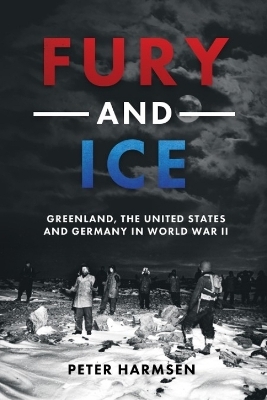
Fury and Ice
Casemate Publishers (Verlag)
978-1-63624-371-9 (ISBN)
The wartime interest in Greenland was a direct result of its vital strategic position—if you wanted to predict the weather in Europe, you had to have men in place on the vast, frozen island. The most celebrated example of Greenland’s crucial contribution to Allied meteorological services is the correct weather forecast in June 1944 leading to the decision to launch the invasion of Normandy. In addition, both before and after D-Day a stream of weather reports from Greenland was essential for the Allied ability to carry out the bombing offensive against Germany.The Germans were aware of the value of Greenland from a meteorological point of view, and they repeatedly attempted to establish semi-permanent weather stations along the sparsely populated east coast of the island. This resulted in an epic cat-and-mouse game, in which US Coast Guard personnel assisted by a celebrated sledge patrol manned by Scandinavian adventurers struggled to locate and eliminate German bases before they could make any difference. It's a story seldom told, but the fact remains that Greenland was the only part of the North American continent in which German troops maintained a presence throughout almost the entirety of the war.At the same time, the US entry into the war triggered an enormous American effort to hastily establish the necessary infrastructure in the form of harbors and air bases that enabled Greenland to form a vital link in the effort to send men and supplies across the North Atlantic in the face of stern opposition from the German Navy. While Allied ships were passing through Greenland waters in massive numbers, planes were plying the so-called Snowball Route from Greenland over Iceland to the British Isles.This gave rise to number of tragic incidents, such as the sinking of the transport ship SS Dorchester off Greenland in February 1942, leading to the deaths of 674 out of 904 men on board, including the “Four Chaplains”—representing the Methodists, the Reformed Church, the Catholic Church, and Judaism—who gave up their life jackets to save others. In July the same year, in one of the most massive, forced landings in history, “the lost squadron,” six P-38 Lightning fighter aircraft and two Flying Fortresses, crash-landed on a Greenland glacier.
Peter Harmsen, PhD, is the author of New York Times bestseller Shanghai 1937: Stalingrad on the Yangtze and Nanjing 1937: Battle for a Doomed City, as well as the War in the Far East trilogy. He studied history at National Taiwan University and has been a foreign correspondent in East Asia for more than two decades. He has focused mainly on the Chinese-speaking societies but has reported from nearly every corner of the region, including Mongolia and North Korea. His books have been translated into Chinese, Danish and Romanian.
Chapter 1. Geography and brief history of Greenland.
Chapter 2. 1939: The situation at the outset. The importance of Greenland to the German war effort. British plans for Greenland.
Chapter 3. 1940: The initial, unofficial US Coast Guard presence. First unsuccessful German attempt at establishing a weather station, intercepted by British forces.
Chapter 4. 1941: The war before the war. US Coast Guard and Army Air Force buildup in Greenland. Coast Guard’s seizure of German meteorological crew in September before US formal entry into war.
Chapter 5. 1942: The weather war intensifies. Arrival of German expedition under the leadership of Austrian mountaineer Hans Ritter. Greenland as a key hub in the shipment of troops and materiel from North America to Europe.
Chapter 6. 1943: The end of the Ritter expedition and the culmination of the weather war.
Chapter 7. 1944: Last German efforts in Greenland. Two German weather stations are eliminated by US forces and members of the sledge patrol.
Chapter 8. 1945: The last months of the war. Conclusion. How did Greenland contribute to Allied victory? What were the lessons learned? Is this experience relevant for today?
| Erscheinungsdatum | 21.08.2024 |
|---|---|
| Zusatzinfo | 30+ b&w photographs |
| Sprache | englisch |
| Maße | 152 x 229 mm |
| Themenwelt | Geschichte ► Allgemeine Geschichte ► 1918 bis 1945 |
| Geschichte ► Teilgebiete der Geschichte ► Militärgeschichte | |
| ISBN-10 | 1-63624-371-1 / 1636243711 |
| ISBN-13 | 978-1-63624-371-9 / 9781636243719 |
| Zustand | Neuware |
| Haben Sie eine Frage zum Produkt? |
aus dem Bereich


